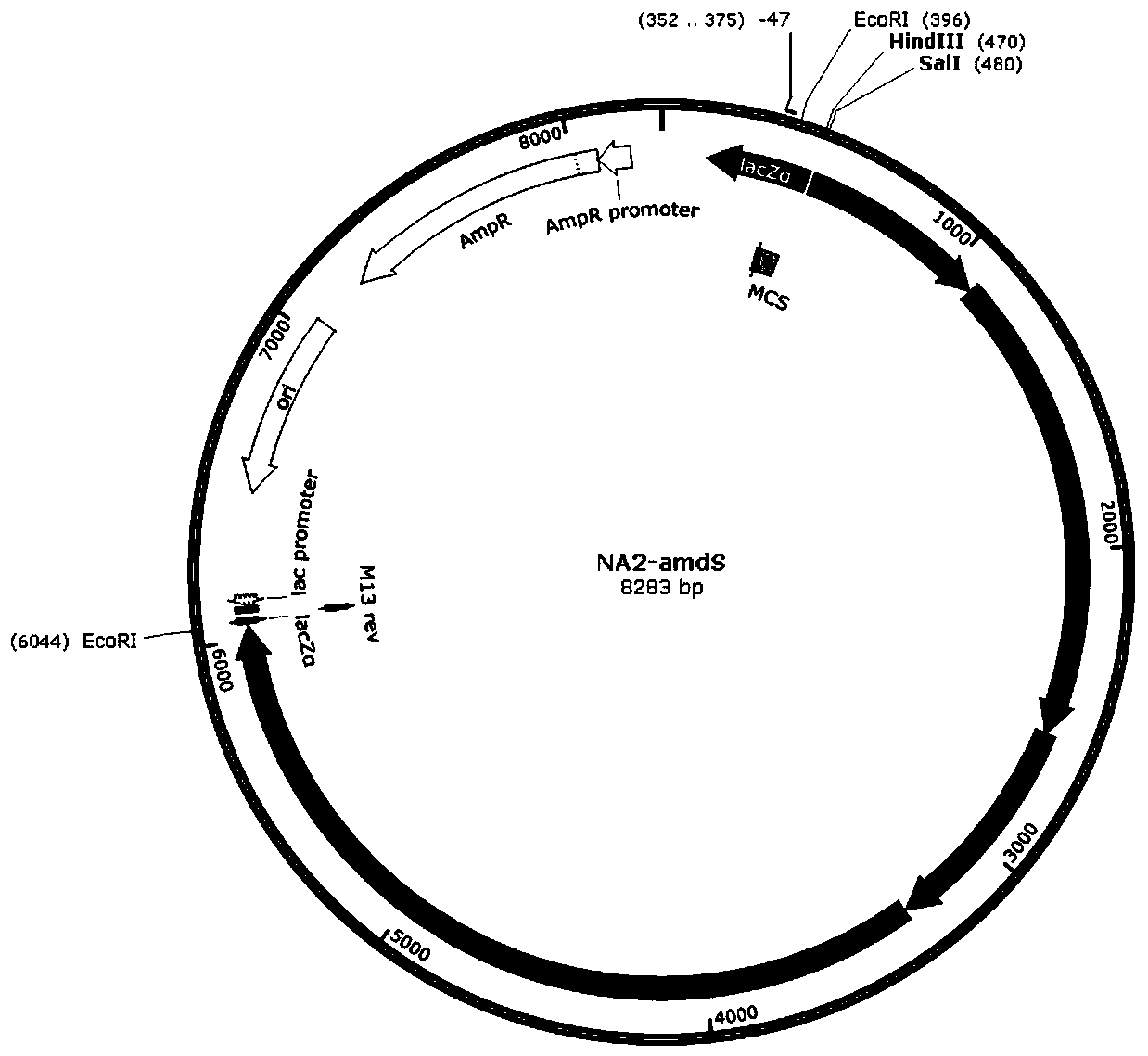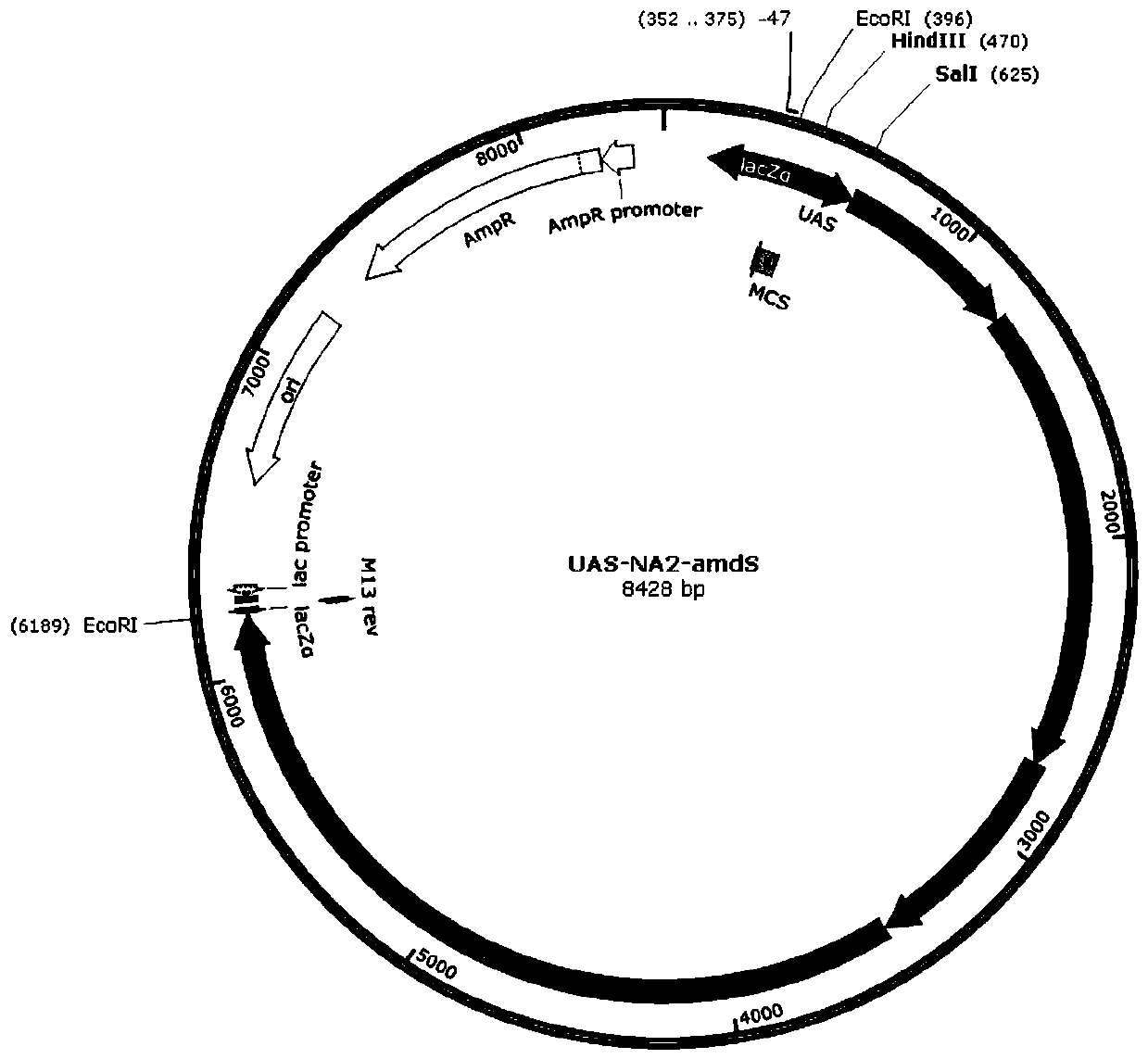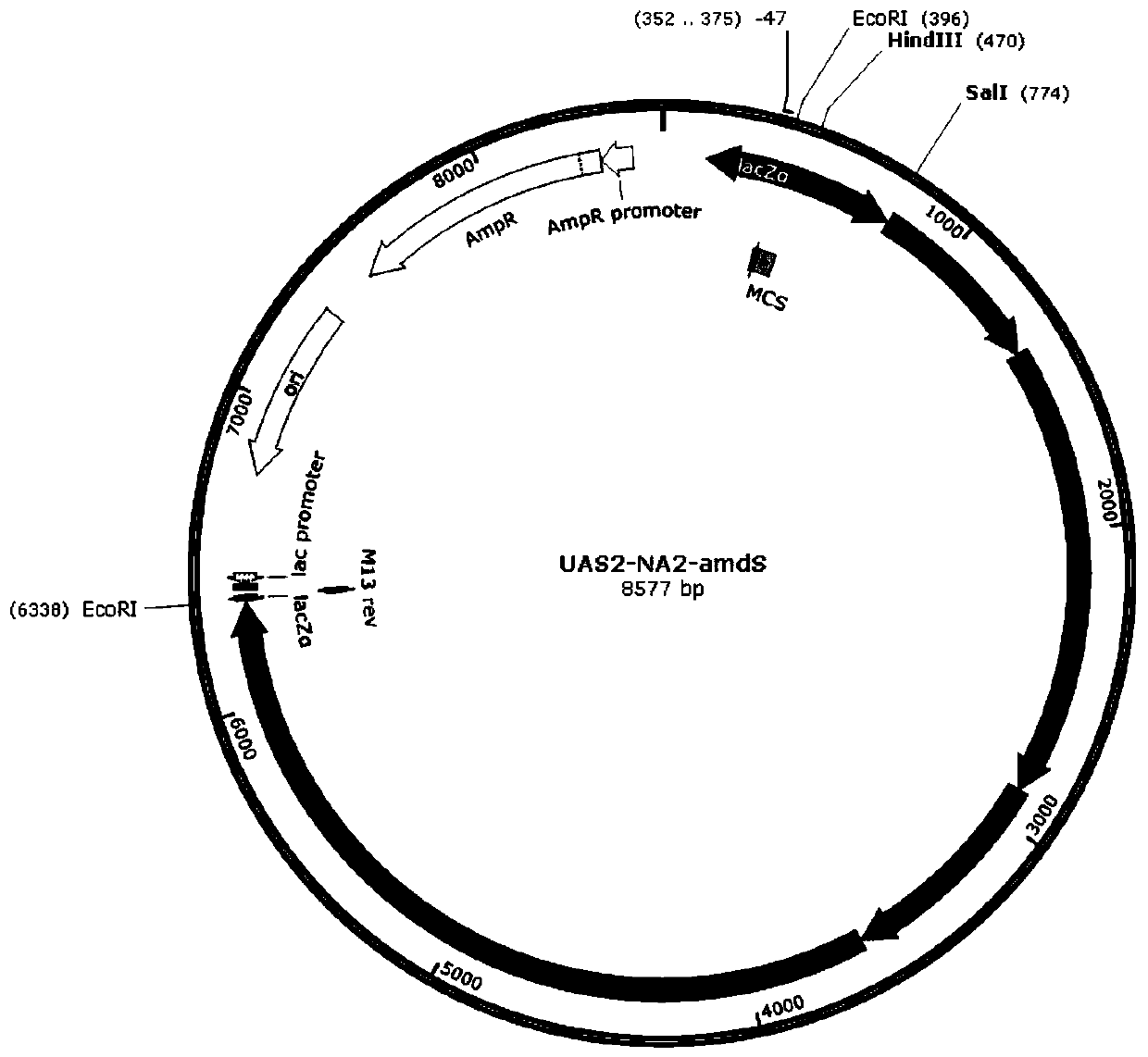Application of a yeast upstream activation element in filamentous fungi
A filamentous fungus, upstream technology, applied in the field of molecular biology, can solve problems such as unpredictable effects of transferring foreign genes to hosts
- Summary
- Abstract
- Description
- Claims
- Application Information
AI Technical Summary
Problems solved by technology
Method used
Image
Examples
Embodiment 1
[0034] 1. Gene synthesis of UAS elements
[0035] The UAS elements were obtained from NCBI, and single-copy, two-copy and three-copy UAS elements were synthesized respectively. HindIII and SalI sites were added to the 5' and 3' ends of the sequence, and the target sequence was cloned into the pUC57 vector. The single-copy USA element sequence containing HindIII and SalI sites at both ends is shown in SEQ ID NO.1, and the double-copy USA element sequence containing HindIII and SalI sites at both ends is shown in SEQ ID NO.2, and both ends contain HindIII and the three-copy USA element sequence of the SalI site is shown in SEQ ID NO.3.
[0036] 2. Construction of expression vector
[0037] After obtaining the NA2 promoter (SEQ ID NO.4), terminator (SEQ ID NO.5), fungal amylase gene coding sequence (SEQ ID NO.6) from NCBI, the expression vector was constructed with pUC57 as the starting vector, and named for NA2-amdS ( figure 1 ), the sequence was synthesized by GenScript.
...
Embodiment 2
[0049] Example 2 Comparing the difference in the expression level of tandem copies of UAS
[0050] UAS2-NA2-amdS, UAS3-NA2-amdS vector transformation and enzyme activity identification methods are as described in Example 1.
[0051] Take 20 transformants each, and detect the enzyme activity of the shake flask samples, and the results are as follows: Figure 6 As shown, the expression level of three tandem UAS is about 20% higher than that of two tandem UAS.
Embodiment 3
[0052] Example 3 Effect of UAS cloning to terminator end on expression level.
[0053] UAS and two copies of UAS were cloned into the 3' end of the terminator of the NA2-amdS vector respectively, and the vectors were named NA2-UAS-amdS ( Figure 7 ), NA2-UAS2-amdS ( Figure 8 ). Vector transformation and enzyme activity identification methods are as described in Example 1.
[0054] Take 20 transformants each, and detect the enzyme activity of the shake flask sample, the results are shown in Table 2 and Figure 9 As shown, the results show that UAS cloning downstream of the terminator can still enhance the expression of the target protein fungal amylase.
[0055] Table 2
[0056]
PUM
 Login to View More
Login to View More Abstract
Description
Claims
Application Information
 Login to View More
Login to View More - R&D
- Intellectual Property
- Life Sciences
- Materials
- Tech Scout
- Unparalleled Data Quality
- Higher Quality Content
- 60% Fewer Hallucinations
Browse by: Latest US Patents, China's latest patents, Technical Efficacy Thesaurus, Application Domain, Technology Topic, Popular Technical Reports.
© 2025 PatSnap. All rights reserved.Legal|Privacy policy|Modern Slavery Act Transparency Statement|Sitemap|About US| Contact US: help@patsnap.com



